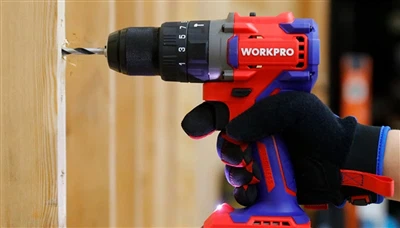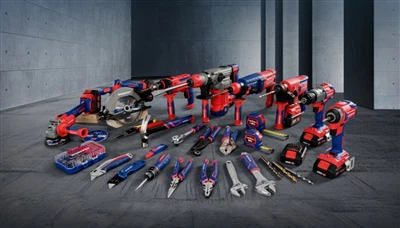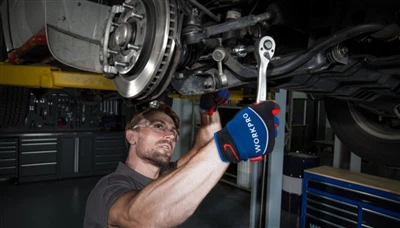When it comes to applying heat in various tasks, two common tools come to mind: the heat gun and the hair dryer. At first glance, they might appear similar-they both blow hot air, they're handheld, and they even look somewhat alike. However, their uses, functionality, and safety considerations are worlds apart. Mistaking one for the other can lead to suboptimal results or even dangerous situations. Let's delve into the differences and appropriate uses for these tools to ensure you always reach for the right one.
1.What is a heat gun?
A heat gun is a versatile tool that emits a stream of hot air, typically at temperatures ranging from around 100 to 1,000 degrees Fahrenheit (38 to 538 degrees Celsius), depending on the model and settings. It looks like a hairdryer but operates at much higher temperatures. Heat guns are commonly used in various applications such as stripping paint, thawing pipes, shrinking tubing, bending plastic, softening adhesives, and even crafting. They come with different temperature settings and airflow speeds, allowing users to adjust them according to their specific needs.

2.Heat Gun: The Heavy-Duty Hot Air Blaster
Purpose and Use: Heat guns are designed for industrial and heavy-duty tasks. They are incredibly versatile tools that can reach very high temperatures, typically between 100°C (212°F) and 700°C (1292°F).
-
Given that the aforementioned specifications lack cosmetic utility, let's delve into the practical applications of a heat gun.
-
One of its most invaluable uses is in unfreezing pipes during winter. While numerous methods exist for thawing plumbing without a heat gun, none match its effectiveness.
-
In crafting, a heat gun proves indispensable for rendering plastic malleable, facilitating shaping according to one's needs.
-
When dealing with wallpaper and paint removal, employing a heat gun significantly expedites the process. It weakens the paint's bond to the surface, and in the case of wallpaper, breaks down the adhesive. Those who have attempted wallpaper removal sans heat gun likely endured unnecessary hardship, as its use drastically simplifies the task.
-
Similarly, when removing linoleum or other floor coverings, a heat gun can degrade the adhesive, considerably easing the removal process.
-
Frozen locks can be swiftly and reliably defrosted with a heat gun, surpassing the efficacy of a hairdryer.
It makes applications in the followings:
-
Stripping Paint: Quickly removes layers of paint without damaging the surface beneath.
-
Heat Shrink Tubing: Perfect for electrical work where wires need insulation.
-
Thawing Frozen Pipes: Can safely and effectively thaw pipes in the winter.
-
Crafts and Hobbies: Used in crafting for tasks like embossing or bending plastic.

3.How do you use a heat gun?
Similar to a hairdryer, using a heat gun is essentially a matter of point-and-shoot simplicity. While most heat guns activate upon plugging in, high-end variants offer adjustable settings and on/off triggers, capable of reaching significantly higher temperatures compared to their commercial counterparts.
As a rule of thumb, it's advisable to begin at a distance of at least one foot from the object being heated. The concentrated heat beam poses a risk of rapid destruction or damage to the workpiece if brought too close. Mastery of the optimal distance will develop with increased familiarity with the tool. Due to their high heat output, heat guns must be used with caution. Always keep them away from flammable materials and never point them at your skin or others. Use appropriate protective gear such as gloves and safety glasses, and ensure adequate ventilation when working with materials that might release fumes.
4.Differences in heat gun models
Just like any product, variations exist based on both expenditure and proficiency. For our crafting and sealing of window coverings, we rely on a basic heat gun devoid of temperature gauges, buttons, or dials-it merely reaches a fixed temperature of 300 degrees Fahrenheit (148.89°C), directed manually as needed. If precision is your priority, a digital heat gun offers a more tailored experience, featuring a clear temperature display for accurate monitoring.
Furthermore, the nozzle shape holds significance. Employing a narrower nozzle, with a significantly reduced diameter, will produce a highly concentrated, swiftly expelling jet of hot air, necessitating increased distance between yourself and the target.
Conversely, a broader nozzle will naturally impact a larger surface area with diminished intensity. Additionally, various shapes cater to distinct purposes. For example, a wide-mouthed configuration might excel in the removal of stubborn wallpaper but prove ineffective for heating plastic materials.

5.What is a hairdryer?
A hairdryer, also known as a blow dryer, is an electrical appliance designed to blow hot or cool air over damp hair to speed up the evaporation of water particles and thus dry the hair. It typically consists of a motor-driven fan and heating elements. Hairdryers come in various shapes, sizes, and power capacities, with features such as adjustable heat settings, speed settings, and attachments like diffusers or concentrators for different styling needs. They are commonly used in homes, hair salons, and other grooming establishments to style and dry hair quickly after washing.
Most individuals are likely familiar with the functionality of a hairdryer, albeit perhaps not in a contemplative, philosophical context. While we won't delve deeply into such philosophical musings, we can examine some salient features that define a hairdryer:
-
In terms of temperature, a typical hairdryer typically operates at temperatures not exceeding 140 degrees Celsius. This stands in stark contrast to a heat gun, which typically begins at this temperature threshold. The rationale behind this limitation is rooted in the primary function of a hairdryer, which is to dry and style hair. Temperatures exceeding 140 degrees Celsius pose a significant risk of hair damage and potential harm to the user.
-
The design of a hairdryer incorporates a tip engineered to disperse airflow outward, rather than concentrating it within a confined area. This design facilitates expedited drying of hair strands while mitigating the risk of excessive heat exposure, thereby aiming to minimize potential hair damage.
-
Hairdryers often feature an array of attachments and, in some instances, a cold air mode. These supplementary features enhance the versatility of the appliance, rendering it adept at styling various hair types. Indeed, versatility in styling capabilities remains the core objective of hairdryers.
6.When is it Appropriate to Substitute Heat Guns for Hair Dryers and Vice Versa?
The lower temperature range of the heat gun and the mid to upper range of the hairdryer are approximately equivalent, both reaching around 120 degrees. Consequently, under specific conditions, either device could serve the same purpose. However, it is imperative to avoid directing the heat gun towards hair at all times.
-
Although crayon marks may present a challenge to remove, being a wax-based product, they can be effectively eliminated using the heat generated by either a heat gun or a hairdryer.
-
In regions with climates necessitating window wrapping, both a heat gun and a hairdryer prove instrumental in ensuring the plastic adheres tightly to the surface.
-
When dealing with shrink-wrap, the application of either a low-setting heat gun or a standard blow-dryer yields favourable results. In the event of adhesive stickers proliferating on surfaces due to the playful antics of children, either appliance serves as a viable solution for facilitating their removal, mitigating the risk of paint damage or residue formation.
-
It is prudent, however, to exercise caution when repurposing a hairdryer for non-traditional tasks, as prolonged operation beyond its intended use may lead to motor overheating and subsequent malfunction. Instances, where the motor ceases to function, serve as a reminder to refrain from overexerting the appliance, lest it succumbs to premature demise. In essence, treating one's appliances with care and restraint ensures their longevity and continued utility.
Final Thoughts
Understanding the differences between a heat gun and a hair dryer is crucial for achieving the best results and maintaining safety. Each tool is designed with specific tasks in mind, and respecting these purposes ensures you not only get the job done effectively but also avoid unnecessary hazards. Whether you're crafting, repairing, or grooming, choosing the right tool makes all the difference. So next time you need to apply some heat, think twice and make sure you're grabbing the right device for the job.











